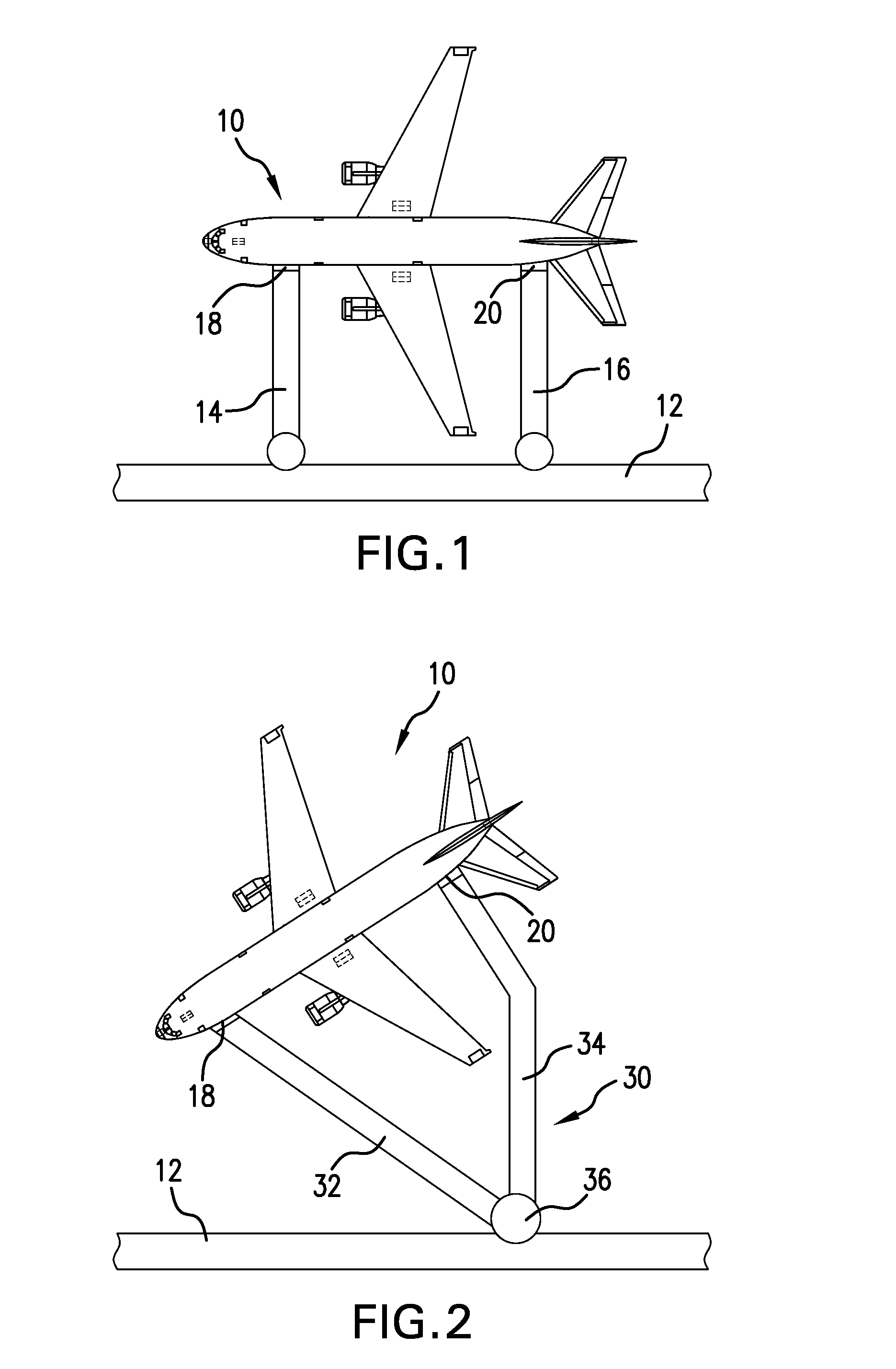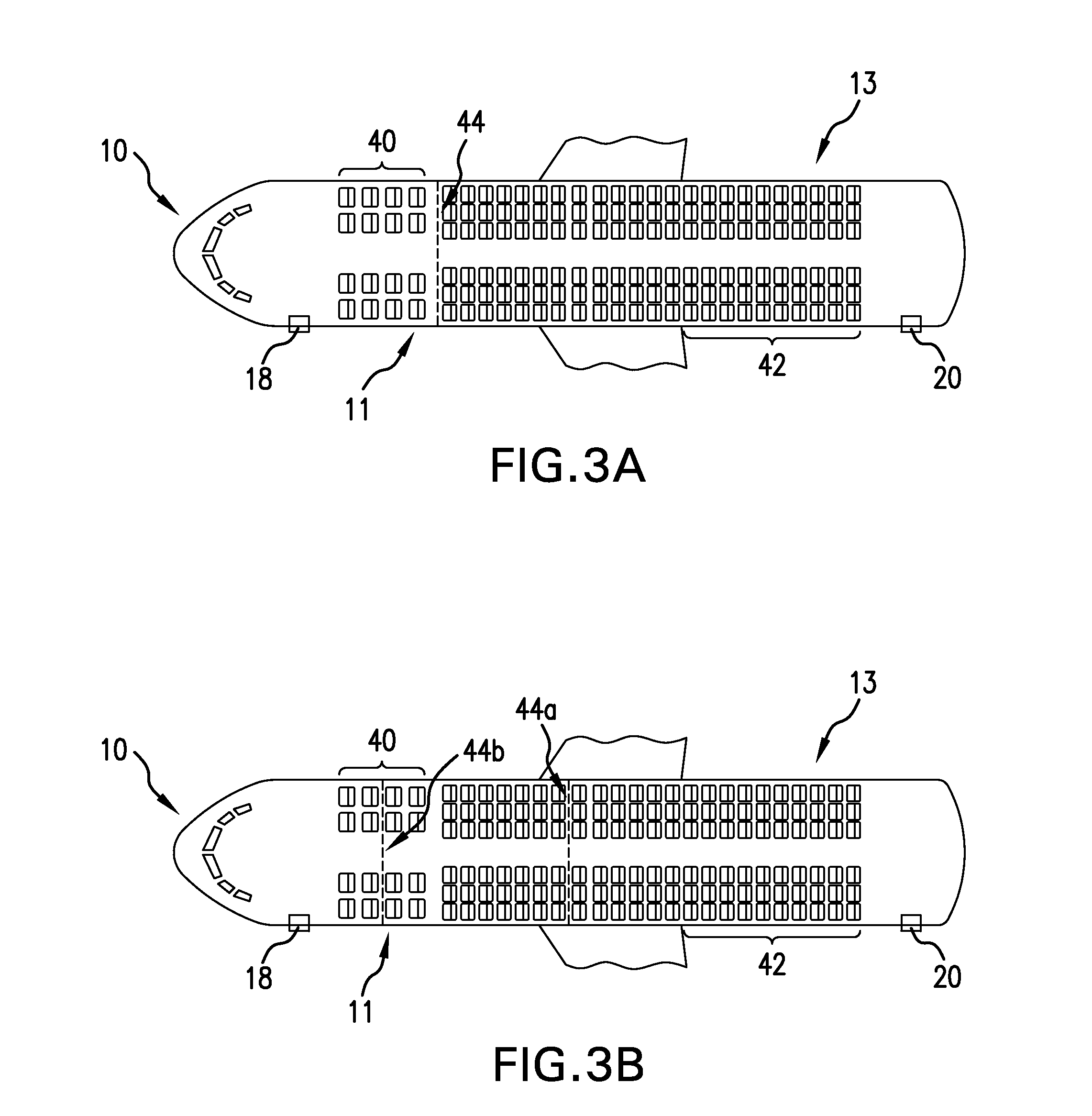Aircraft passenger boarding system
- Summary
- Abstract
- Description
- Claims
- Application Information
AI Technical Summary
Benefits of technology
Problems solved by technology
Method used
Image
Examples
Embodiment Construction
[0022]As noted above, aircraft passenger boarding methods and systems date back to the beginning of commercial flight. The search for more efficient passenger boarding methods and systems has intensified as some aspects of air travel have become more complicated in recent years and passenger dissatisfaction has grown. Many, if not most, passengers want to travel at the lowest cost possible, but also want a travel experience that is not accompanied by frustration and delay. Those passengers who pay more for their travel or who demonstrate their loyalty to an airline by flying on that airline with a certain level of frequency have expected, and most airlines have provided, a flying experience that is different from those passengers who are flying economy. One of the areas in which airlines have not been able to provide a better travel experience for their first class and frequent flyer passengers is the boarding process. Although passengers who receive preferential treatment have been...
PUM
 Login to view more
Login to view more Abstract
Description
Claims
Application Information
 Login to view more
Login to view more - R&D Engineer
- R&D Manager
- IP Professional
- Industry Leading Data Capabilities
- Powerful AI technology
- Patent DNA Extraction
Browse by: Latest US Patents, China's latest patents, Technical Efficacy Thesaurus, Application Domain, Technology Topic.
© 2024 PatSnap. All rights reserved.Legal|Privacy policy|Modern Slavery Act Transparency Statement|Sitemap



